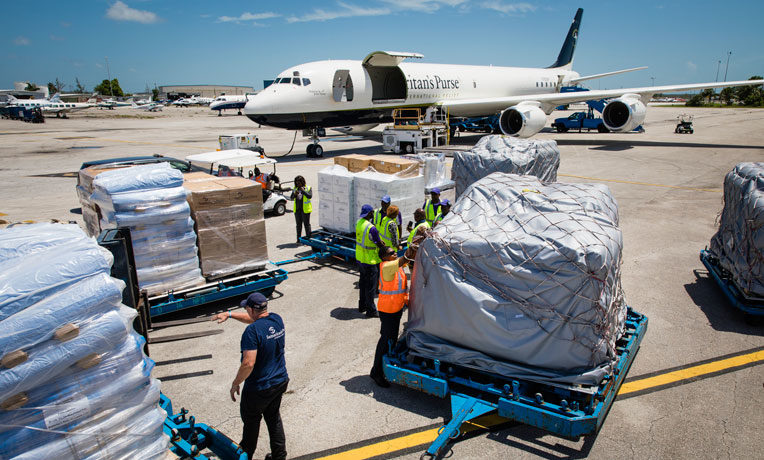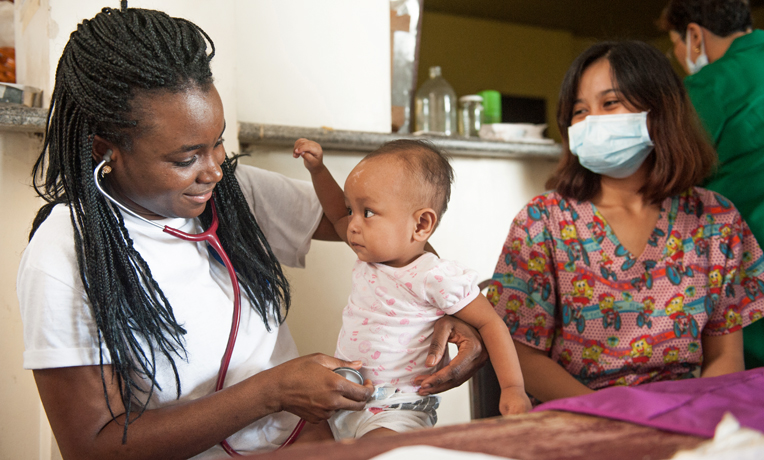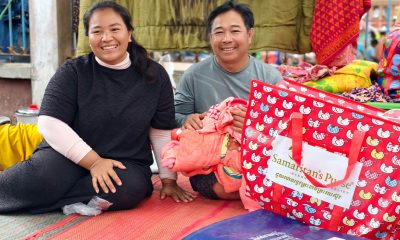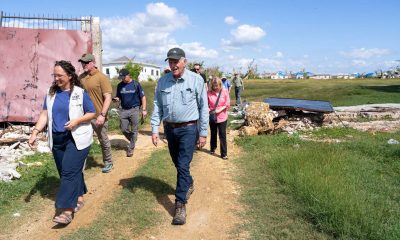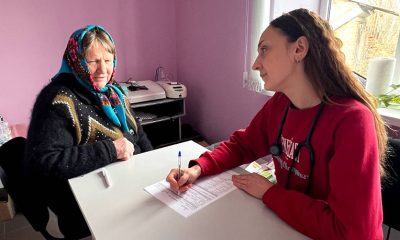A doctor who served with Samaritan's Purse in Haiti is now working in the Philippines to help meet medical needs after the typhoon
After multiple volunteer trips to Haiti following the January 2010 earthquake, Dr. Linda Mobula served for a year as director of the Samaritan’s Purse-funded medical clinic in the Cité Soleil district of Port-au-Prince. She helped manage the cholera outbreak there and ended up doing her master’s thesis on that subject at Johns Hopkins’ Bloomberg School of Public Health.
Help Disaster Victims Around The WorldAfter graduating in May 2013, she is back in the field again, serving the frontlines to help alleviate suffering in the aftermath of another disaster.Linda is working with the Samaritan’s Purse medical team in the Philippines after Super Typhoon Haiyan wrecked havoc on the archipelago. She is among about a dozen medical professionals at the Schistosomiasis Hospital in Palo City, Leyte.
The hospital offers a wide range of basic care to the general public, though it is dedicated to the control and research of schistosomiasis, a parasitic infection originating from snails that can cause organ damage if untreated. The hospital, which sustained severe damage on its second floor, is one of only two government-supported hospitals in the area.
 The primary objective of Samaritan’s Purse is to help the hospital maintain capacity while they rebuild. Our team is collaborating with the local staff of doctors and nurses to treat patients. A mobile field hospital provided by Samaritan’s Purse will serve as a temporary extension to the existing facility.
The primary objective of Samaritan’s Purse is to help the hospital maintain capacity while they rebuild. Our team is collaborating with the local staff of doctors and nurses to treat patients. A mobile field hospital provided by Samaritan’s Purse will serve as a temporary extension to the existing facility.
Born in the United States, Linda spent much of her adolescence in the Democratic Republic of Congo, the home of her parents. She says the needs there—lack of health infrastructure, supplies, personnel, and access—inspired her to go into the medical profession. She completed her residency at Johns Hopkins Bayview in Baltimore, Md.
In the Philippines she has been inspired again, though in a different way.
“The staff at this hospital are the real heroes,” Linda said. “I’ve been really inspired by their sacrifice. A lot of them made sure their families were OK and then came to work the next day.”
 The hospital is seeing quite a bit of pneumonia and acute diarrhea, which is hardly surprising with millions left homeless by the typhoon. Many are either braving the elements or living in tight quarters at an evacuation center. Clean water is at a premium. Children are particularly vulnerable.
The hospital is seeing quite a bit of pneumonia and acute diarrhea, which is hardly surprising with millions left homeless by the typhoon. Many are either braving the elements or living in tight quarters at an evacuation center. Clean water is at a premium. Children are particularly vulnerable.
On her second day seeing patients Linda treated a 9-month old baby girl who lost her mother in the storm. The child, living in an evacuation center with her father, had pneumonia. Linda gave her aunt, who accompanied the little girl, appropriate antibiotics to take back. The hospital also provided her some powdered milk for nutrition since area stores have not yet reopened due to the massive scale of destruction and continued loss of power.
Linda and other staff prayed for the family at the end of the visit. It was natural as her Christian faith “plays a huge role” in her work of treating the sick and distressed.
“We want to reflect what Christ did and obey His commandments,” she said.
Today, for her, that calling means serving the people of the Philippines in Jesus’ Name.
